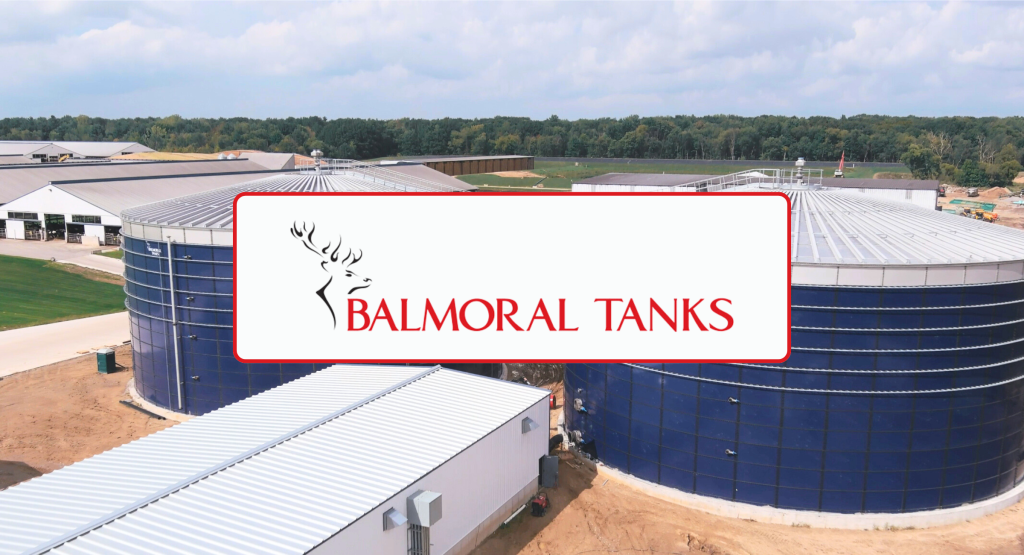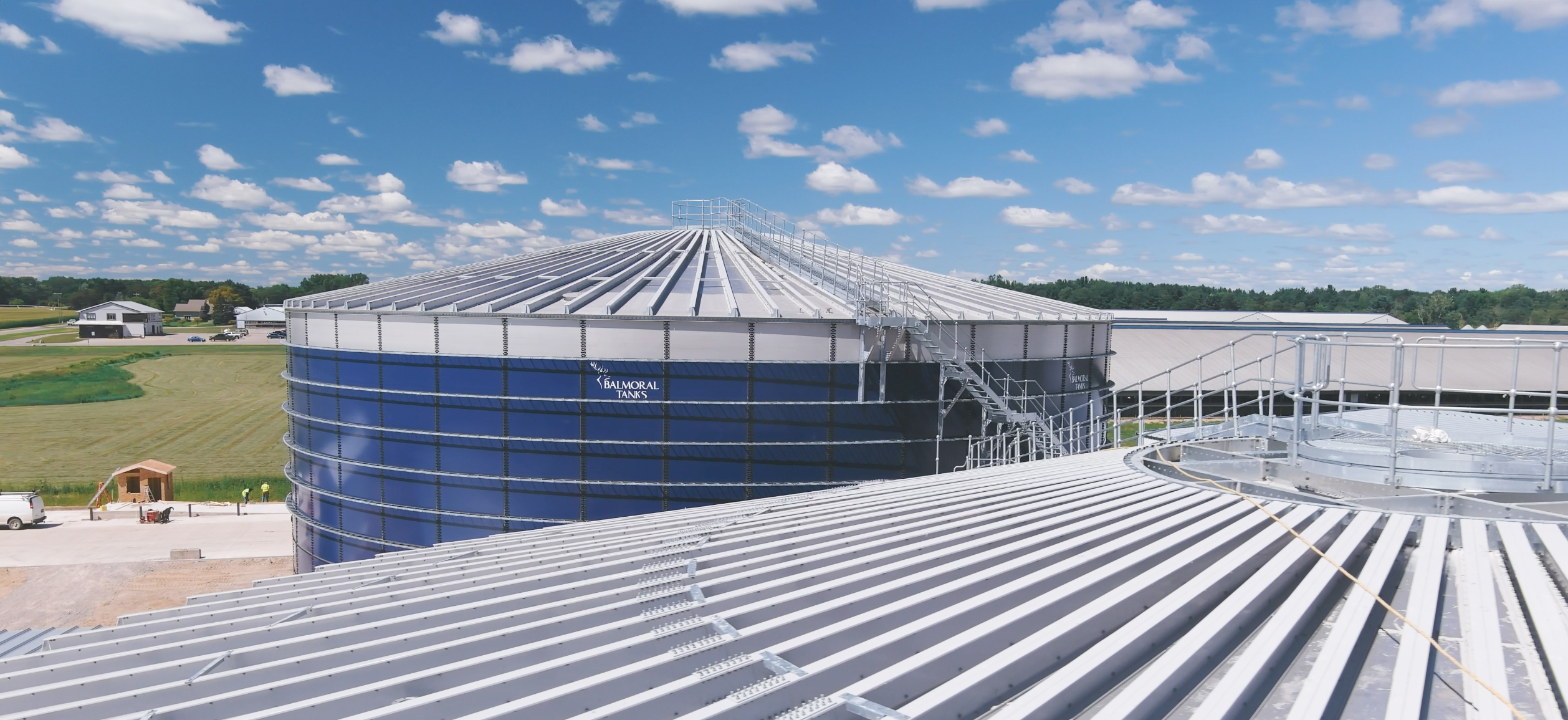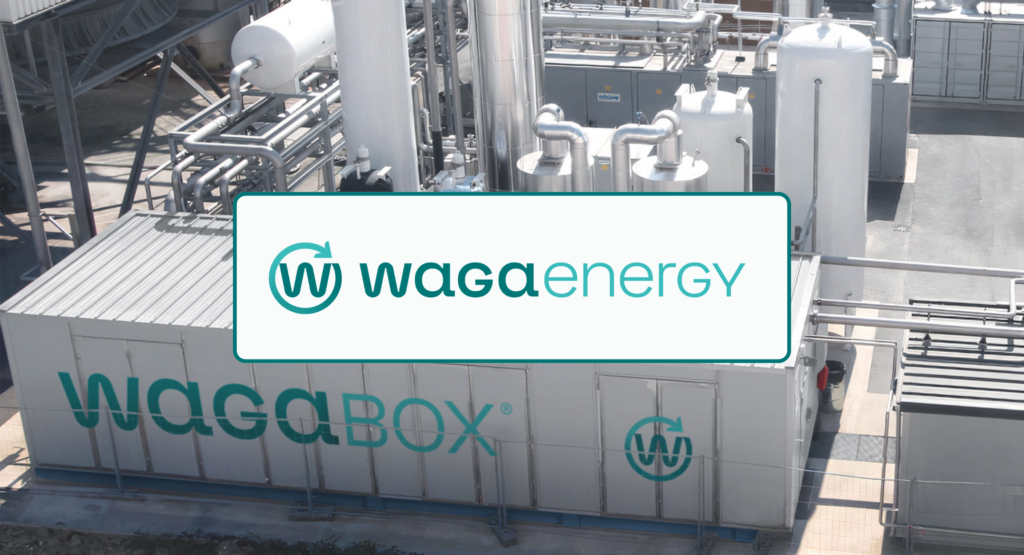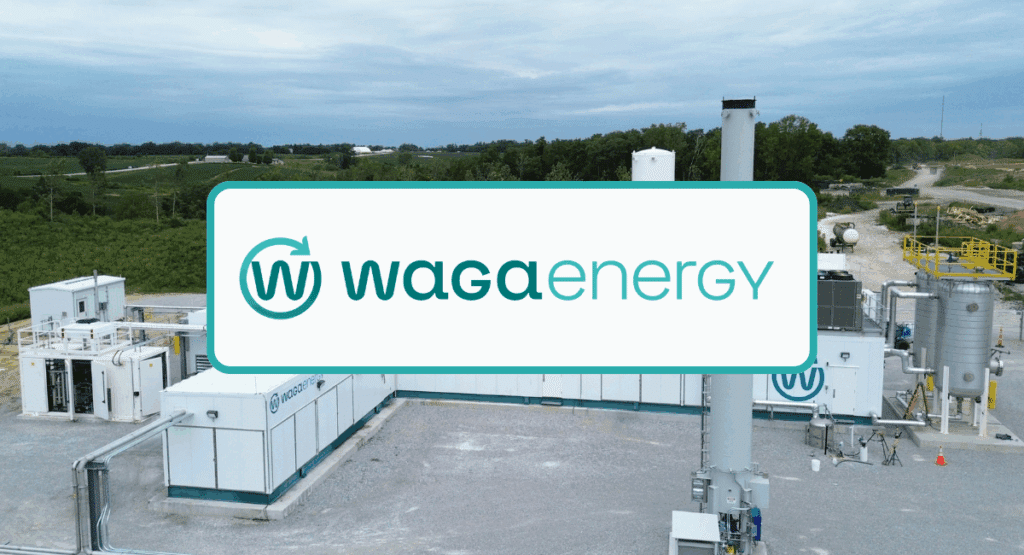Pulling the Trigger on Anaerobic Digestion: The Time is Right Now

Written by Simon Scott, Export Sales Director, Balmoral Tanks
A mix of federal and state incentives are creating a powerful argument to invest in anaerobic digestion (AD) capacity in the United States. Yet, today we see only a fraction of the potential uptake materialize.
At first glance, this doesn’t seem to be a problem; those incentives seem to have distant sell-by dates, stretching into the 2030s. However, the convergence of a handful of trends means that the right time to get the ball rolling is actually right now, and those still chewing the cud may put themselves at a commercial disadvantage.

The Size of the Pie
Biogas produced using AD can be used to generate electricity or heat, or even upgraded to biomethane to displace gasoline in vehicles or natural gas in gas networks. There are a lot of end-user markets available, and wherever it finds a use, it tends to displace fossil fuel alternatives, therefore reducing greenhouse gas (GHG) emissions.
For example, landfills in the US are the third-largest source of human-related methane emissions. In 2017, projects that capture landfill gas already generated around 17 billion kilowatt-hours (kWh) of electricity annually and delivered 98 billion cubic feet of gas to pipelines or direct to end-users.
Another major source of methane for AD is cattle. In 2022, the US Energy Information Administration (EIA) estimated that just 23 dairies and livestock operations fitted with anaerobic digesters produced approximately 121 million kWh of electricity from biogas. However, in 2017 the U.S. Environmental Protection Agency (EPA) estimated there is potential in the US for up to 8,421 livestock biogas systems, with the potential to generate over 13 million megawatt-hours (mWh) of energy each year.
Biogas feedstocks can also include food waste, wastewater treatment and crop residues. In short, it is a renewable resource with a diverse range of markets to sell into and vast volumes of untapped domestic feedstock which is often produced naturally as waste. On paper, it’s the way to turn gas into gold.

The Sweeteners
If AD is a good deal for American businesses, it’s a good deal for state and federal government too, as they grapple with commitments to reduce emissions and increase the use of renewable resources. Consequently, there are a variety of subsidy regimes aimed at nudging businesses into investing in AD capacity.
First up at the federal level: internal tax credits (ITCs). For US businesses investing in AD capacity, provided they use mostly US manufactured goods and materials, they get a six percent credit on putting an AD plant in. If they also use American labor at prevailing wage rates, that is multiplied by five to hit 30 percent.
Then factor in the Inflation Reduction Act (IRA). This offers a two percent credit which again, can be multiplied by five if at least 40 percent of the manufacturing material is from US sources – totaling a 10 percent credit.
Put those together and an AD plant can earn a 40 per cent tax credit, provided it uses enough American labor and materials. That can turn a 10-year return-on-investment (ROI) into as little as four. Alternatively, businesses can sell credits to others.
Then there are potential state-level incentives to factor in. The headliner in this respect is the California Low Carbon Fuel Standard (LCFS), which allows producers of renewable natural gas (RNG) (including biogas) to earn carbon credits which can then be sold on the state’s carbon market. At the time of writing, credits sold for around $44 each, but as recently as 2018 that figure stood at $200. In any case, revenue from the sale of carbon credits is in addition to that from selling the gas.
To put it another way, if producing biogas from waste streams and selling it at a profit is the cake, and federal tax credits for investing in capacity are the icing, state-level subsidies such as the LCFS are the cherry on top.

Why the Right Time is Right Now
So far there hasn’t been a stampede to take up these offers, but rather an orderly line. As of 2022, there were just under 200 RNG projects operating in the US, up from just below 50 in 2014. In 2021, 70 percent of RNG production was derived from landfills, and about 20 percent from agricultural waste. However, that production from agricultural waste alone was only 10 per cent of its estimated potential – there is huge headroom for growth.
Many businesses with the potential to invest in AD capacity are taking a wait-and-see approach, perhaps to see what happens with carbon credit prices, or to see whether other states follow California’s example. There are deadlines to the regulations, however they often only require projects to be under ‘significant progress’, not complete. In other cases, such as the IRA’s 31st December 2024 deadline, there is a widespread expectation that the scheme will be updated or replaced with something similar rather than completely withdrawn.
In other cases, it may simply be confusion. The US doesn’t have the multi-decade familiarity with AD technology that some European markets do, and navigating the bureaucracy that comes with ITC and IRA credits can call for a small army of lawyers, tax consultants and advisors.
However, wait-and-see is a mistake. Not because of the removal of incentives on the demand-side, but on the capacity constraints on the supply-side.
For context, in most places in the world, a typical AD tank size would be 800,000 to 1.6m gallons. At Balmoral Tanks, our first US order back in 2021 was for a 3m gallon digester. From there, it has only grown, with a single order last year totaling six 3m gallon units.
There are not a lot of places with the track-record, know-how, technology and capacity to put out tanks of that size. That number will be reduced further if you restrict the scope to manufacturers using best-in-class modern materials. Older tank designs rely on concrete (which requires a secondary protection system to be maintained to prevent corrosion, and is carbon intensive), or stainless steel, which still requires robust sealing around the bolted joints, which are natural weak points. By contrast, modern designs use fusion-bonded epoxy coatings, with separate coatings designed for above and below the gas line, to perform to the same parameters as stainless steel with a 30-40 percent cost advantage.
Thinking back to the size of the potential market in the US, it would take just a small fraction of those businesses to hit the button on an AD investment to tie up US manufacturing capacity for years, creating bottlenecks and shutting out many companies from the opportunity.
Right now might just be the right time to pull the trigger.
About Simon Scott
Simon, who joined Balmoral Tanks in 2016, brings decades of expertise in export business development and building distributor networks across global markets. Having worked in the anaerobic digester sector since the early 1990s, Simon specialises in specification selling, territory development and relationship management. His international experience includes living in the UK, UAE, Singapore and Vietnam, and he has travelled to over 70 countries during his career.






Comments